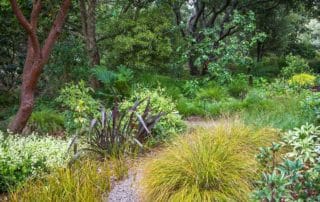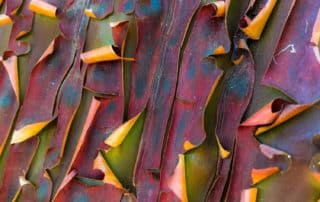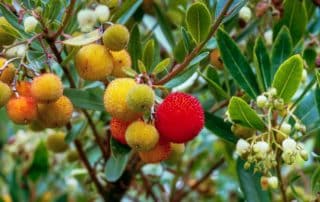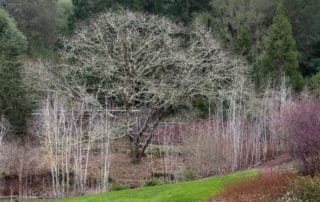Description and photos of trees for summer-dry gardens
The Carbon Capture Garden
Carbon capture is widely viewed as a promising means of slowing global warming by reducing levels of atmospheric carbon dioxide, one of a number of gases responsible for trapping heat and warming the earth’s surface. Carbon dioxide produced by industrial processes can be captured at its source and injected underground. Atmospheric carbon dioxide is naturally taken up by plants, which transform the gas into a form that can be stabilized and stored in soil. Carbon capture is maximized by a diverse planting of deeply rooted trees, shrubs, and perennials, minimally pruned, with no pesticides and soil left undisturbed as







